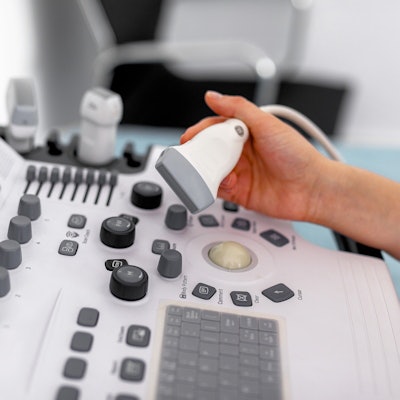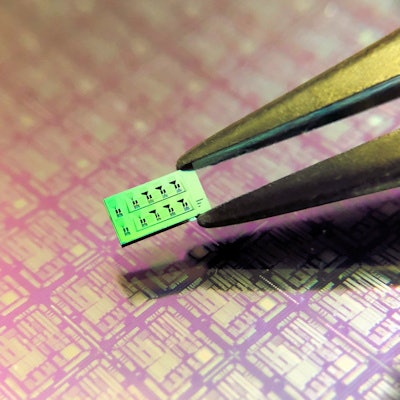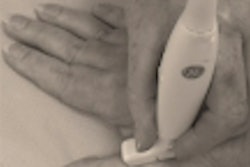
German researchers have created a new type of silicon-based ultrasound detector technology that is 10,000 times smaller than the piezoelectric crystal transducers currently used for clinical sonography.
The detector utilizes a silicon computer chip that can confine light in dimensions that can't be seen by the human eye. As a result, it can visualize features much smaller than modern ultrasound systems can.
The device was created by a team of researchers from Helmholtz Zentrum München and the Technical University of Munich. They call it the silicon waveguide-etalon detector, or SWED.
"This is the first time that a detector smaller than the size of a blood cell is used to detect ultrasound using the silicon photonics technology," stated SWED developer Rami Shnaiderman in a press release.
SWED incorporates the same type of silicon photonics that manufacturers use to densely pack optical components onto small silicon chips. It clocks in at a size of just 0.005 mm, or 100 times smaller than a human hair.
 A 3 x 6-mm silicon chip with multiple SWED detectors. The black engravings are the circuits that connect the detectors, which are not visible. Image courtesy of Helmholtz Zentrum Muenchen and Roman Shnaiderman.
A 3 x 6-mm silicon chip with multiple SWED detectors. The black engravings are the circuits that connect the detectors, which are not visible. Image courtesy of Helmholtz Zentrum Muenchen and Roman Shnaiderman.Unlike piezoelectric crystals, silicon is readily available and lends itself well to mass production, according to the research team. The detector also overcomes size limitations of piezoelectric ultrasound, which has a minimal size for adequate sensitivity.
"If a piezoelectric detector was miniaturized to the scale of SWED, it would be 100 million times less sensitive," Shnaiderman stated.
With its super-resolution imaging capabilities, SWED technology can visualize ultra-fine details in tissue that current ultrasound technology can't see. The team originally developed SWED for optoacoustic imaging but already see additional imaging and sensing applications as well as industrial uses.
Shnaiderman and his team will first test the device with optoacoustic imaging of cells and tissue microvascular structures. The hope is to keep refining SWED until it's ready for clinical use.
"We will continue to optimize every parameter of this technology -- the sensitivity, the integration of SWED in large arrays, and its implementation in hand-held devices and endoscopes," stated Shnaiderman.


















